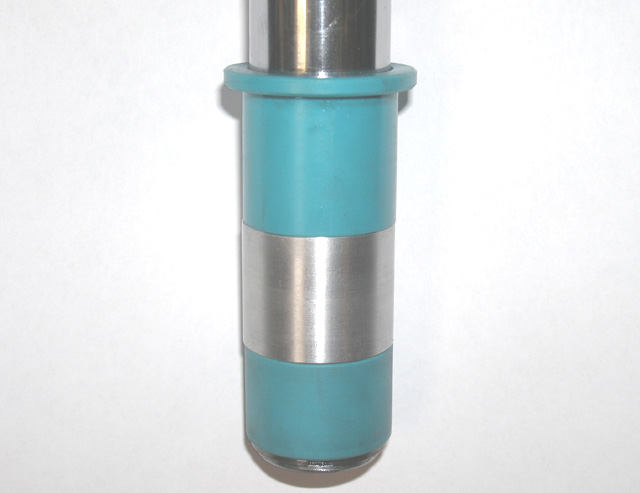Unfortunately, the information in the Haynes manual has been copied from the forks section of the factory manual which not only contains certain inaccuracies but also some known
errors in the description of how the Roadholder damping works.
For your Norton fork to ride smoothly with out bottoming or topping out you must install the slippery JS Motorsport Turcite bushings along with the aluminum sleeves.
jsmotorsport.com
"COMPRESSION DAMPING:
If you have damping tubes with holes below the conical section then you need to cover those holes with JS alum sleeves to achieve a hydraulic bump stop and avoid bottoming “clunk”. Then drill only one 1/8″ hole in the middle of the conical section as in the photo below. The value in compression damping is reducing front brake dive and bottoming in racing – but you will feel more bumps when cruising. I recommend a single 1/8″ hole per conical section which gives minimal high speed compression damping and is good for the street. A smaller 3/32″ hole will give you more compression damping but you will feel more bumps. Larger than 1/8″ will give the smoothest ride but no compression damping.
If you already have 1/4″ holes in or above the conical section then you won’t have compression damping and that is fine for the street. If you already have two 1/4″ holes and you definitely want compression damping then you will have to fill the holes, smooth them off and drill only one 1/8″ hole in each tube."
75 MkIII, 15k miles, one owner. I just replaced the springs with Progressive springs and filled with the appropriate amount of 20W fork oil, pumped the fork to remove any trapped air and took it for a test ride. On the test ride I noticed that the forks bottom easily on bumps and seem to have...

www.accessnorton.com
"Compression damping? Stock forks dont have any.."
Quote from the late John Bould inventor and original manufacturer of the Lansdowne dampers.
Post date: Dec 25, 2011 12:51:16 PM

www.nocnsw.org.au
"It does not take a degree in mechanical engineering to work out that there may as well be no taper at all above the lowest edge of the holes. This is because, as before,
there is no real restriction of oil movement during fork compression, since it just squirts up inside the damper tube through the holes."
If you believe there is a measurable amount of compression damping in the original system then perhaps you'd care to have a go at describing how that compression damping is achieved.







